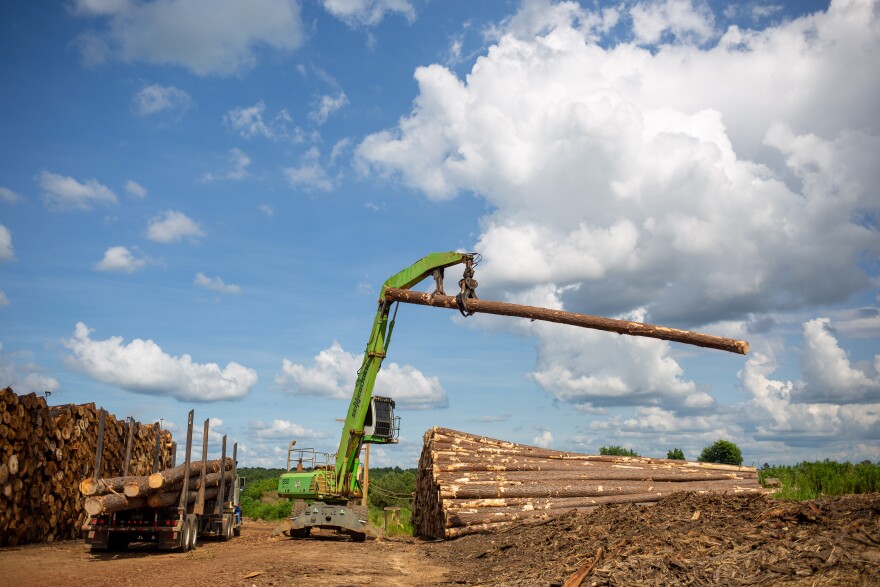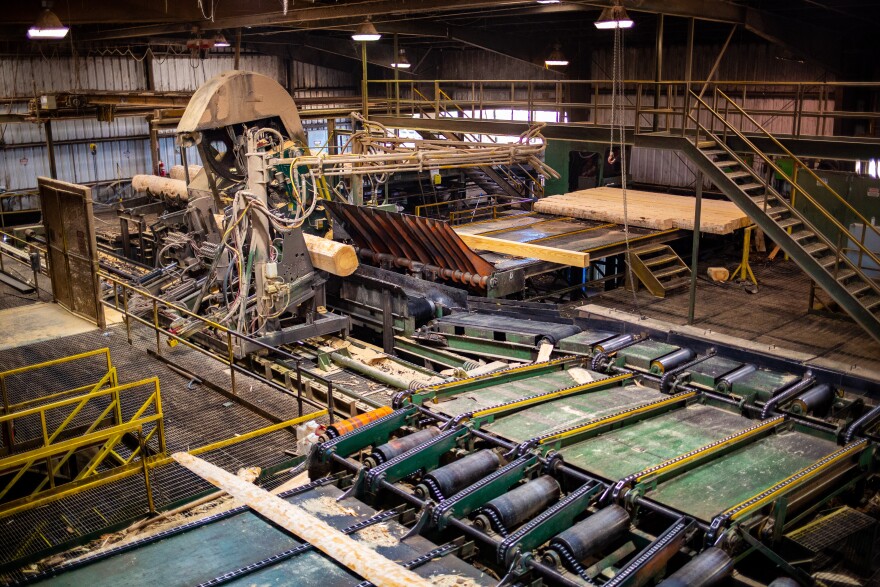Residents of Northeast Texas have renewed their fight against a massive reservoir that would flood tens of thousands of acres along the border of Red River, Franklin, and Titus counties. The Marvin Nichols Reservoir, if built, would supply the booming Dallas-Fort Worth region with water for decades.
Opponents of the project say the proposed lake would devastate the timber industry in Northeast Texas. The reservoir would flood 66,103 acres, including over 10,000 acres of bottomland hardwood forest.


Jim Thompson is chief financial officer and legal counsel for Linden-based Ward Timber and has been a leading voice in the movement to stop Marvin Nichols.
“There’s one reason there’s a timber industry in Northeast Texas and nowhere else in the state … because we got ready, available, local timber,” Thompson said. “If you start making that timber supply go out 75, 100 miles, they’re not going to be able to compete with the same industries in Alabama, or Mississippi, or Louisiana.”
While bad news for Thompson’s business, the reservoir would, of course, support population growth in the Dallas-Fort Worth metroplex — one of the major economic drivers for all of Texas.
A 2019 analysis from economist Ray Perryman estimated the Dallas-Fort Worth region, along with Houston, would be home to “well over half” of new jobs in Texas through 2045.


Over the summer, KERA visited Ward Timber’s sawmill in Linden, where the company turns hardwood and pine logs — anything between 8 and 17 feet long — into lumber. It also sells wood chips to paper and packaging manufacturers. Mulch companies buy the bark and sawdust. The mill generates about 60 tons of sawdust each day.
“There’s nothing wasted on the tree,” said sawmill general manager Bret Lowery.
While there are larger sawmills that cut pine, Lowery said Ward Timber owns the largest hardwood mill in the state. The company has crews that log company land and buys logs from independent operators. There is also a small location in Fort Worth where they sell finished lumber products.

Thompson did acknowledge population growth in DFW could lead to an increase in demand for hardwood floors, molding, and other products Ward Timber has a hand in making. But he said reducing the available supply of trees would be a bigger loss.
“There may be some short-term gain, but long term, it’s devastation,” Thompson said.
According to the DFW region’s water plan, the total potential timberland in the footprint of the Marvin Nichols Reservoir is 42,823 acres, or 8.2% of the timberland in Red River, Franklin, and Titus Counties combined.
This number doesn’t account for the land needed to mitigate environmental damage. There is also land needed for dam construction, the spillway, pump station, and a pipeline, though an appendix for the plan said those estimates “were not available.”

Aaron Stottlemyer, an analyst with the Texas A&M Forest Service, the state agency that manages forests, said the big unknown is how much mitigation land is needed.
“Anytime you’re decreasing the supply of something, in this case timber, that has the potential to drive prices up,” Stottlemyer said.
The DFW plan said recent reservoirs have required about as much mitigation land as the actual lakes did. For Marvin Nichols, that would be 66,103 acres. Stottlemyer said the mitigation land needed could be many times that.
The Army Corps of Engineers said it is “exceptionally difficult” to have any sense of how much mitigation land would be needed until they have a proposal and analysis in hand. There are several different federal programs that could be involved.
“The devil is in the details, and there are a lot of details,” said Chandler Peter, technical specialist with the Corps’ Fort Worth District regulatory division.



